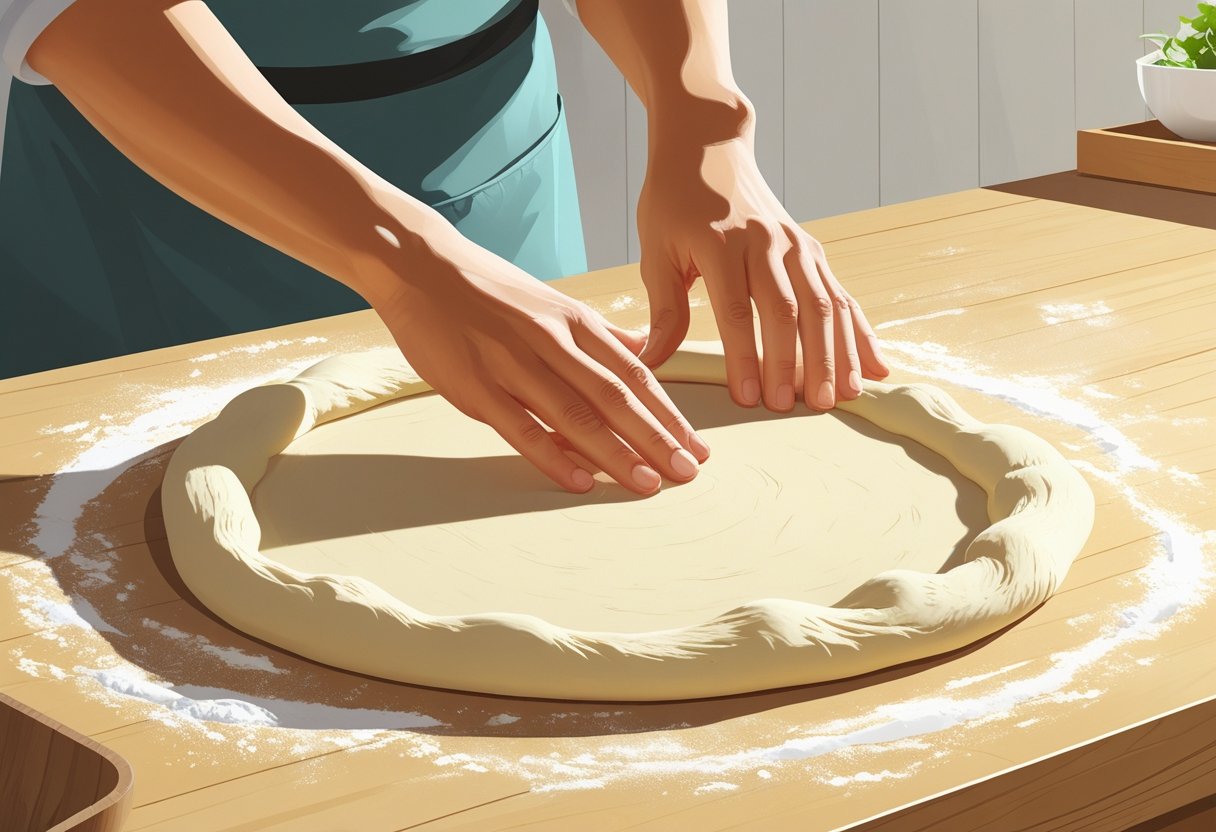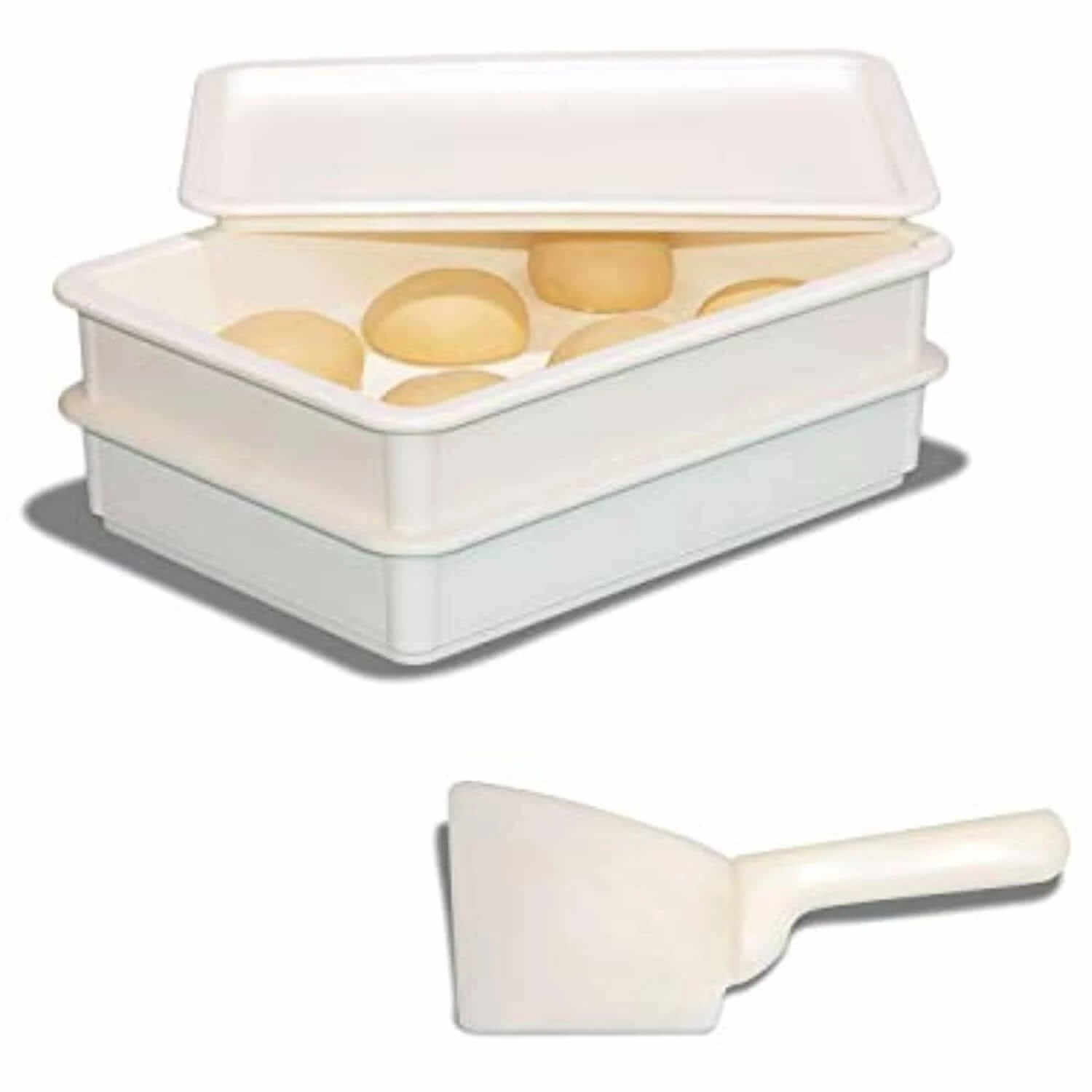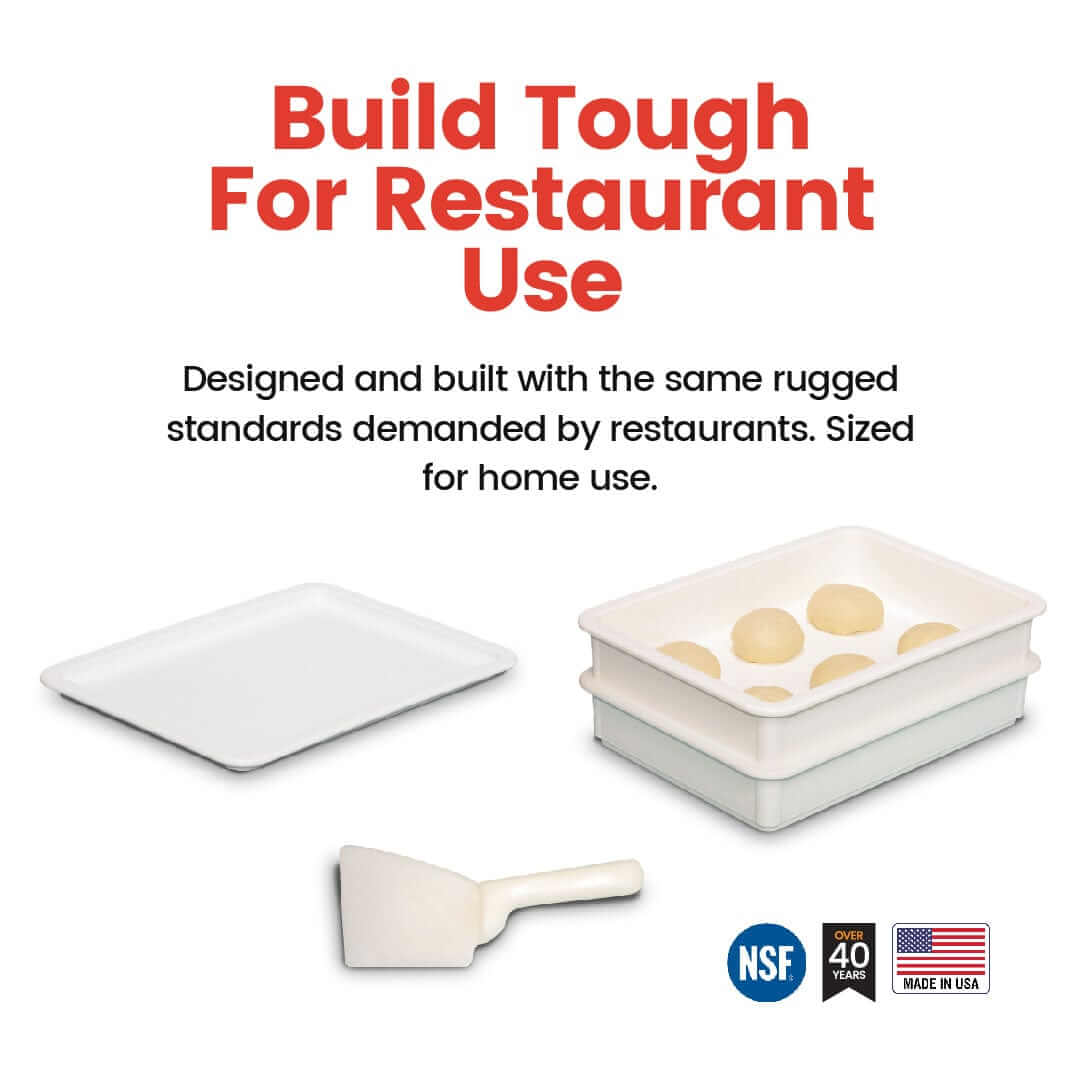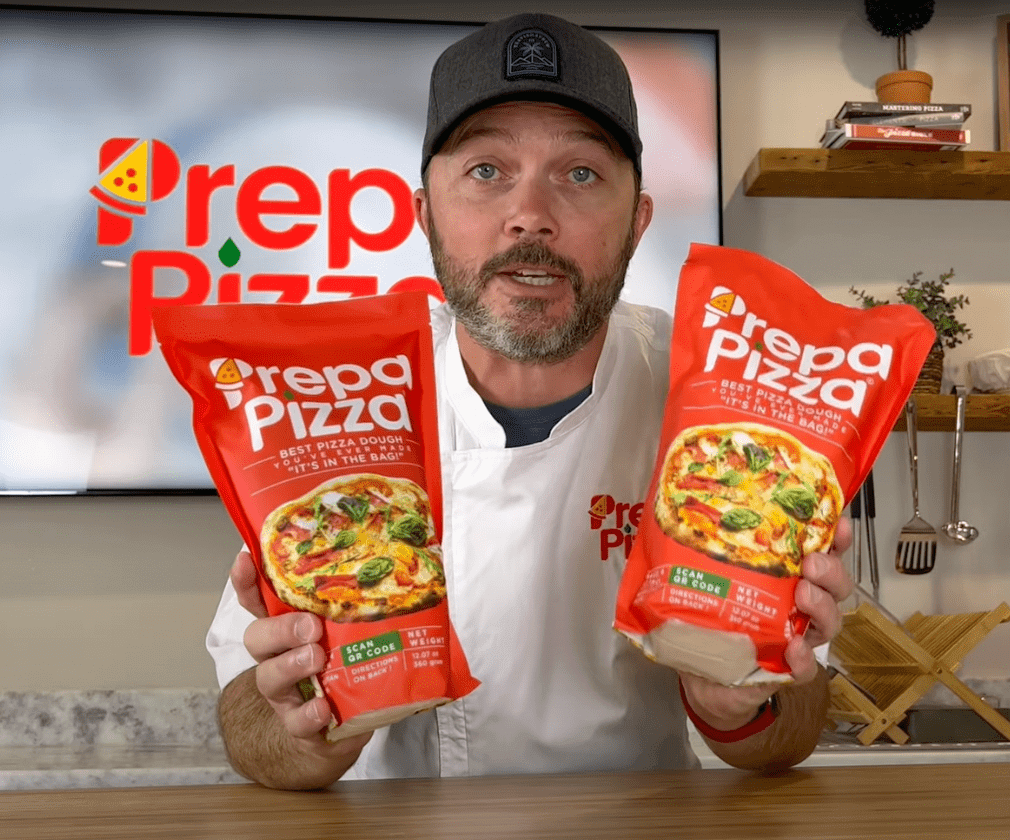
How to Shape Pizza Dough Evenly for Perfectly Balanced Crusts Every Time
Shaping pizza dough evenly is essential to achieving a perfectly cooked crust with balanced thickness and texture. When you use Prepa Pizza’s premium quality premade dough, crafted with restaurant-grade ingredients, you already start with a solid foundation. This dough kit is designed for consistency, making the stretching and shaping process smoother and more reliable for home pizza makers like you.
The key to shaping pizza dough evenly is to gently stretch it outward from the center using your hands, allowing the dough’s own weight to help create an even round shape without tearing or thinning certain areas too much. You can explore Prepa Pizza’s dough kit to get started with dough that responds well to this method, ensuring your pizza base stays resilient and uniform as you shape it.
With the right dough and shaping technique, you’ll avoid thick edges or overly thin spots, setting you up for a crisp, evenly baked crust every time. If you want to take the guesswork out of dough preparation, check out Prepa Pizza’s premade dough kit for a consistently high-quality start.
Preparing Pizza Dough for Shaping
To shape pizza dough evenly, you need to focus on proper dough handling before you start stretching. This includes managing dough portions, encouraging gluten development, and paying attention to dough temperature. Preparing your dough correctly makes it easier to achieve a consistent shape and texture.
Dough Portioning and Resting
Start by dividing your pizza dough into even portions to ensure each pizza will cook uniformly. Use a kitchen scale to weigh your dough for precision. Keeping portions consistent helps with even cooking and predictable results.
After portioning, let the dough rest at room temperature for at least 30 minutes. This rest period encourages the dough to relax, minimizing the risk of it snapping back when you stretch it. If you’re using Prepa Pizza’s premade dough, give it this resting period after thawing for the best pliability. You can find Prepa Pizza’s premium dough at the Prepa Pizza dough kit page.
Gluten Development and Dough Elasticity
Gluten is the protein network that gives pizza dough its stretch and chew. Proper gluten development from kneading or mixing makes the dough elastic but also strong enough to hold its shape during shaping and baking.
When you’re working with Prepa Pizza’s dough, it has already been prepared with optimal gluten levels for homemade pizza. However, resting the dough allows gluten strands to relax, improving stretchability. Avoid over-handling your dough during shaping, which can tighten gluten and cause it to contract, making even shaping difficult.
Temperature Considerations
Temperature directly affects dough elasticity and ease of shaping. Cold dough is stiff and resistant to stretching, while dough that is too warm can become sticky and hard to handle.
Before you shape, warm your dough to room temperature—between 68°F and 72°F is ideal. This softens the gluten and makes stretching easier without tearing. If dough is refrigerated, remove it at least 30 to 60 minutes before shaping to allow for this warming. Prepa Pizza’s premade dough is designed to respond well to these temperature guidelines, ensuring consistent texture and easy shaping every time.
Essential Tools and Work Surface Setup
To shape pizza dough evenly, you need the right tools and a well-prepared surface. Using high-quality dough, like Prepa Pizza’s premade dough, gives you a reliable foundation. Their dough's consistency helps you focus on technique rather than troubleshooting ingredients. Proper tools ensure your dough transfers smoothly and cooks with the perfect crust texture.
Your workspace should be clean, lightly floured, and large enough to handle stretching and shaping without tearing. Having the right equipment ready makes the process easier and improves the dough’s final shape and bake quality.
Choosing the Right Pizza Peel
A pizza peel is essential for moving your shaped dough from the work surface to the oven.
Choose a peel that is thin enough to slide under the dough easily but strong enough to hold it securely. Wooden peels are good for shaping and transferring dough because the dough is less likely to stick on wood, but metal peels are more durable and better at handling hot pizzas.
Before moving the dough, sprinkle flour or cornmeal on the peel’s surface to prevent sticking. Make sure your peel is large enough to accommodate your pizza size, typically 12 to 16 inches in diameter for home use.
Selecting and Using a Pizza Stone
A pizza stone is crucial for even heat distribution and moisture absorption during baking.
Choose a ceramic or cordierite stone designed to retain and radiate heat evenly. This helps create a crisp, evenly cooked crust, essential when using premium dough like Prepa Pizza’s.
Place the stone in the oven before preheating to ensure it reaches high temperatures. Bake your pizza directly on the stone for the best crust texture. Avoid placing the dough on a cold stone, as this can cause uneven cooking.
For easy shaping, you can stretch your dough directly on a lightly floured peel, then transfer it onto the hot pizza stone in the oven.
Using these tools correctly maximizes the advantages of your premium premade dough and helps you achieve a consistent, professional-quality pizza crust.
For a premium dough option ready to shape, try Prepa Pizza’s premade dough kit.
Fundamental Techniques for Shaping Pizza Dough Evenly
To achieve an evenly shaped pizza dough, focus on controlling the dough’s tension and thickness while using your hands to gently coax it into a uniform circle. Using high-quality premade dough like Prepa Pizza's restaurant-quality dough helps ensure dough elasticity and texture, making the shaping process smoother. You can find their premium dough here.
Maintaining a consistent shape relies on mastering how to stretch the dough without tearing, balancing the dough’s weight during shaping, and avoiding tools like rolling pins that compress the air pockets inside. The following techniques focus on controlling these aspects for the best results.
Hand-Stretching Basics
Start by lightly flouring your hands and work surface to prevent sticking. Gently press your dough ball from the center outward, using your fingertips to spread it evenly. Avoid pressing too hard near the edges to keep a raised crust.
Use a combination of pressing and pulling motions by cupping your hands underneath the dough and rotating it. This method encourages even stretching while maintaining the dough’s air bubbles, which are essential for a light, airy crust.
With premade dough from Prepa Pizza, you benefit from dough that’s pre-fermented and rested to perfect elasticity, allowing you to stretch without resistance or tearing. This step helps ensure your pizza base forms a smooth, even canvas for toppings.
Achieving Even Thickness
Even thickness matters because uneven dough can cause burning or raw spots. Focus on gradually thinning the dough layer by layer rather than stretching it all at once. Work from the center, leaving a thicker edge for the crust.
To check thickness, visually inspect and feel the dough for uniformity. Aim for about 1/8 to 1/4 inch thickness across the surface. If certain areas feel thicker, press gently or rotate the dough to redistribute it evenly.
Avoid using a rolling pin, which compacts dough and removes important air pockets. Instead, rely on your hands and small adjustments to maintain a slight rise in the crust region. Prepa Pizza’s dough is ideal here because it holds consistency well during stretching.
Using Gravity to Assist Shaping
Gravity is a useful tool to help your dough stretch evenly without forceful handling. Once you have a rough round shape, drape the dough over your knuckles and rotate slowly, allowing its own weight to stretch it downwards.
Keep your hands slightly raised and use a gentle spinning motion to let gravity pull the dough wider. This technique lets you avoid overworking the dough, which can cause tears or uneven spots.
Ensure your dough from Prepa Pizza is at room temperature before stretching; cold dough resists gravity, while the warmer temperature makes it more pliable and easier to shape. Combining hand-stretch and gravity results in a perfectly round, evenly thin pizza base.
Special Considerations for Different Pizza Styles
Shaping pizza dough can vary widely depending on the style you want to achieve. Factors like dough hydration, thickness, and handling techniques play a crucial role. Using Prepa Pizza’s premium premade dough, made with quality ingredients and restaurant-grade standards, can simplify this process and deliver consistent results. You can find their Prepa Pizza Dough Kit which is designed to work well across different styles.
Understanding how to shape the dough according to your pizza style will help you avoid common problems like uneven crusts or dough tearing. Proper stretching techniques and gentle handling are vital, especially when working with specialty doughs like Neapolitan or homemade varieties.
Shaping Neapolitan-Style Pizza
Neapolitan-style pizza dough requires a delicate hand because of its high hydration and soft texture. This type of dough is typically stretched by hand, using fingertips to press from the center outwards, leaving a thicker outer edge for the crust. Avoid using a rolling pin as it compresses the air bubbles important for the light, airy structure.
Start with a light dusting of flour to prevent sticking but use it sparingly to maintain the dough’s stretchiness. The goal is a thin, even base that can cook quickly in a high-temperature oven. Prepa Pizza’s dough performs well here due to its elasticity, making it easier to shape without tearing.
Adapting Techniques for Homemade Pizza
When shaping dough for homemade pizza, you’ll want more control over thickness and size. You can stretch the dough on a floured surface using a gentle pulling and rotating motion, which helps keep the shape even. Use your knuckles rather than fingers to reduce the risk of holes.
If you use Prepa Pizza’s premade dough, you save time and benefit from a consistent, reliable texture suited to various homemade pizza styles. This dough accommodates experimentation, whether you prefer thin-crust or slightly thicker bases. Use small, incremental stretches rather than aggressive pulling to maintain uniform thickness.
Handling Store-Bought and Frozen Dough
Store-bought or frozen pizza dough tends to be less forgiving and requires thawing to room temperature before shaping. Cold dough is stiff and prone to tearing if stretched too fast. Let it rest after thawing to relax the gluten, making it more pliable.
Using Prepa Pizza’s premade dough eliminates the guesswork since it’s ready to shape after a short rest. When handling, avoid excessive flour that will dry out the surface. Instead, work gently to preserve the dough’s integrity, shaping it evenly for a consistent crust.
Common Shaping Challenges and Practical Solutions
When shaping pizza dough, common issues like tearing and uneven stretching can affect your final crust’s texture and appearance. Using high-quality premade dough like Prepa Pizza's ensures better elasticity and structure, helping you avoid many typical problems as you work toward a perfect pizza. Their dough kit is designed to give you consistent results every time.
Proper handling techniques help preserve the dough’s strength and prevent frustration in the kitchen, especially when aiming for an even shape and thickness.
Preventing Tears and Holes
Tears and holes often occur when the dough is overly dry, stretched too aggressively, or hasn’t rested enough. Using a lightly floured surface helps reduce sticking without drying the dough out.
With Prepa Pizza’s premade dough, the hydration level is balanced, but if you feel resistance, allow the dough to relax at room temperature for 15-20 minutes before continuing. This rest period lets gluten relax, reducing tears during shaping.
Work gently with your fingers instead of sharp motions. Avoid pulling from one spot only; instead, stretch evenly around the edges in small increments. If a hole appears, pinch the dough back together without overworking it to maintain elasticity.
Avoiding Over-Stretching and Undershaping
Over-stretched dough becomes thin and fragile, risking collapse and an uneven bake. Conversely, undershaped dough results in thick, doughy centers. You want a consistent thickness, typically around ¼ inch, for balanced cooking.
To avoid over-stretching, use your knuckles or the backs of your hands to support the dough while gently rotating it. Prepa Pizza dough’s restaurant-quality strength allows you to stretch thinly without tearing prematurely—just take your time.
If the dough resists stretching, it likely needs more resting or a quick warm-up. Undershaping can happen if you don’t stretch the dough enough; aim to gradually enlarge it by rotating and stretching evenly. A well-shaped dough yields a crisp yet tender crust essential for a perfect pizza.
Final Steps Before Baking
Before placing your pizza in the oven, ensure your dough is shaped evenly with a uniform thickness and a consistent round shape. These final adjustments help you achieve a crust that cooks evenly and has the ideal texture.
Using premade dough like the one from Prepa Pizza makes this process easier because it comes with a reliable texture and hydration level, allowing for better control in shaping at home.
Checking for Evenness and Symmetry
Start by inspecting the dough visually and by touch. Look for uneven spots where the dough may be thicker or thinner. Thicker areas will slow cooking, causing uneven crust texture.
Feel the dough surface gently with your fingertips, pressing lightly to detect inconsistencies in thickness. Rotate the dough and stretch or press out the thicker parts to even it out. Aim for a uniform thickness across the dough, typically about ¼ inch for most pizzas.
Check the shape for symmetry. The goal is usually a round or slightly oval form with evenly stretched edges. Irregular or jagged edges can cause uneven baking or uneven toppings distribution.
Transferring Dough to the Oven
Once even, prepare to move your dough to the baking surface. If you are using a pizza stone or steel, preheat it thoroughly to ensure proper heat transfer and crisp crusts.
Dust your peel or baking surface with flour or semolina to prevent sticking. Slide the dough carefully, avoiding folds or tears. Handle it gently to maintain the dough’s shape.
If you prebake your crust for extra crispiness, do this quickly before adding toppings. Use a firm but controlled motion to place the pizza on the hot surface, then immediately add toppings and slide it back into the oven.
Using quality dough from Prepa Pizza helps maintain elasticity and shape, making transferring simpler for pizza at home.
Frequently Asked Questions
Shaping pizza dough evenly depends on mastering hand-stretching and rolling techniques while preventing sticking. Forming a perfect dough ball and opening it up properly are also crucial to achieving a consistent crust.
What techniques are best for hand-stretching pizza dough?
Use your fingertips to gently press the dough outward, rotating it as you go. Avoid overly pressing the edges to keep a thicker crust.
Hand-stretching works best when the dough is at room temperature, relaxed and elastic. You can use Prepa Pizza’s premade dough for consistent results since it’s crafted with quality ingredients designed for easy handling and shaping.
Explore Prepa Pizza’s premade dough here to get started.
How can beginners form a perfect pizza dough ball?
Start by lightly flouring your hands and gently folding the dough edges underneath to create surface tension. Roll the dough on a clean surface using your palm to round it out evenly.
Let the dough rest for 15-20 minutes before shaping again if it resists stretching. Using Prepa Pizza’s premade dough reduces the chance of overworking since it’s already prepared to the right hydration.
What are the steps to shape pizza dough using a rolling pin?
Lightly flour your surface and rolling pin to prevent sticking. Start from the center and roll outward in all directions to maintain an even thickness.
Roll carefully to avoid compressing the edges too much, keeping them slightly thicker for a defined crust. Prepa Pizza’s premade dough works well with this method because it’s consistent in texture and elasticity.
Can you describe how to toss pizza dough in the air?
Hold the dough loosely on the back of your fists and gently spin it while moving your hands apart. This uses centrifugal force to stretch the dough evenly without flattening it too much.
Practice spinning small amounts first to build confidence. Premade dough like Prepa Pizza’s ensures the right elasticity, making tossing easier and less likely to tear.
What's the right way to prevent pizza dough from sticking while rolling?
Use a light dusting of flour on the surface and your rolling pin. Avoid adding too much flour or the dough will dry out and lose elasticity.
Keep the dough moving with gentle lifts during rolling to prevent it from sticking in one spot. Prepa Pizza’s dough tends to have the right hydration balance, minimizing stickiness compared to less refined doughs.
What are professional tips for opening up pizza dough to achieve an even crust?
Work with rested dough and avoid pressing too hard on the edges. Use your knuckles and fingertips to gently stretch and open the center.
Rotate the dough consistently as you stretch to maintain roundness and uniform thickness. Using premade dough from Prepa Pizza helps you copy professional results, as it is formulated for ideal elasticity and strength.






























